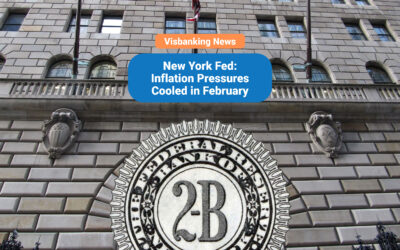By: Ken Chase.
Estimated reading time: 7 minutes
For people who live in the world’s developed nations, the banking sector is often an afterthought. Most of those citizens spend little or no time thinking about the role that their countries’ banks play in fueling economic growth and facilitating daily financial activities. That is especially true in times of economic stability and prosperity. When instability or other economic troubles arise, however, the banking sector’s vital role usually comes into sharper focus.
The 2007-2008 financial crisis was a clear example of that, as financial institutions around the world suffered a massive liquidity contraction that threatened to cause a collapse of the world’s financial system. That crisis led to a massive bailout of many large financial entities, increased government regulation, and the worst recession since the Great Depression. Naturally, the crisis captured the attention of people around the world.
Fortunately, such periods of instability are the exception rather than the rule. In normal times, the banking sector’s impact on the economy draws scant attention. However, that does not mean that the industry’s impact is minor. To the contrary, the banking sector remains a key driver of daily economic activity, growth, and wealth creation.
An industry with ancient roots
Banking has its origins in ancient times. In those early days, wealthy people and rulers who needed safe places to store their currency tended to rely on religious temples. Those depositors believed that the presence of priests and armed guards provided the best security for their wealth, and that faith helped to ensure that those temples tended to become the financial centers of all the major cities of the ancient world.
Eventually, a class of wealthy merchants emerged who recognized the profit potential of lending currency with interest. According to historical records, many temples also adopted that business model, providing larger loans to the rulers of their cities and nations. Later, the Roman rulers removed banking from the temples and created more formal institutions for financial services. Julius Caesar eventually empowered banks to foreclose on property when debts went unpaid, a practice that continues to this day.
Banking obviously survived the collapse of the Roman Empire, though many of Rome’s banks did not. Instead, banking services were maintained by the Papacy and specific orders like the Knights Templar. Later, European monarchs would issue charters for banks, which they would then use to fund everything from building projects to wars.
Many experts trace the origins of modern banking to the ideas of eighteenth-century economist Adam Smith and his theory of the “invisible hand” of unseen forces that facilitate the functioning of any free market economy. Smith proposed that society’s best economic interests were best fulfilled through the interplay of each person’s individual self-interest and ability to freely buy, sell, and consume goods and services, without government central planning. (See, An Inquiry into the Nature and Causes of the Wealth of Nations)
The rise of modern banking in the U.S.
Smith’s theories had a profound, if not immediate, impact on the development of banking. Bankers and other moneylenders were motivated by his ideas to push for limitations on state control over the banking industry – and the broader economy. As a result, free-market capitalism emerged in the United States at around the same time as the idea of competitive, independent banking services. Like many industries, however, America’s banks grew in fits and starts, typically lasting only a few years due to recurring cash crunches and the tendency for bank-issued notes to quickly become worthless.
The rise of larger merchant banks set the stage for the eventual emergence of today’s truly modern banking industry. Companies like J.P. Morgan and Goldman Sachs quickly built enormous capital reserves and became the main providers of major corporate finance and other loans. These banks were unregulated, extremely powerful, and had important connections to financial centers like London. They also helped to create major monopolies in the United States, like the railroads.
That era of merchant banks ironically came to an end shortly after J.P. Morgan personally intervened to help rally support on Wall Street to use their capital to stave off the Bank Panic of 1907. Just six years later, in 1913, the government created the Federal Reserve Bank, which effectively ensured that private banking institutions would never again possess the type of power and influence that Morgan used to rescue the nation from financial peril.
Between 1913 and the outbreak of World War II, the banking industry in the U.S. experienced times of remarkable growth and periods of disastrous contraction. The Roaring Twenties saw a boom in wealth creation and economic activity. They were followed, however, by the crash on Black Tuesday 1929, the loss of some 9,000 banks by 1933, and the Great Depression that continued until America’s entry in World War II in late 1941.
The important role banks play in a modern economy
Since those times of tumult, new government regulations have ensured that Americans’ confidence in their banking system has grown over time. Today, there are laws that guard against the type of speculatory activities that helped contribute to the 1929 crash, and the government-created Federal Deposit Insurance Corp, or FDIC, helps to insure bank accounts against losses up to certain set limits. As a result, the industry has enjoyed a lengthy period of relative stability that has allowed it to fulfill its key role in America’s modern economy.
The most obvious role of today’s banks is seen in the way in which they facilitate day-to-day transactions throughout the economy. Obviously, modern banks no longer carry massive amounts of physical currency, since most of the money in any bank consists of electronic records maintained on computer systems, but banks are still basically “where the money is” – as famed bank robber Willie Sutton once noted when he was asked why he robbed banks. Though most transactions are now conducted electronically, banks remain the backbone of that payment system.
In fact, the presence of banks in a developed economy is vital for ensuring that business and commerce function as seamlessly as possible. The availability of checking and savings accounts – and customers’ easy access to those services – enables companies to pay vendors and employees without the need to maintain huge supplies of physical cash. It makes it easier for workers to receive their pay and simplifies commerce by providing consumers with easy options for purchasing goods and services.
In addition, provides the critical lending businesses and consumers need to operate businesses, purchase large-ticket items, and finance homes, cars, and other important assets. Without banks and other lending institutions, companies and individuals would need to either save their money in physical form until they could afford those purchases or find private moneylenders or investors willing to provide them with the funding they need.
Also play a vital financial intermediary role in an economy’s capital markets, connecting the savers whose accounts supply the capital to the borrowers who use loans. Moreover, when banks lend and those funds are redeposited in other banks, that money is then used to make other loans. As that process plays out throughout the economy, it creates more money, wealth, and growth opportunity.
Perhaps most important of all is the role that the banking industry plays in ensuring that the economy runs as efficiently as possible. As banks receive deposits and make loans, they help to provide a stable and efficient way for capital to be funneled between savers and borrowers. That process helps to remove much of the friction that might otherwise impede economic activity and growth.
Banks can open the door to the modern economy
Finally, it is important to understand what the world looks like in areas where banking services are not readily available. In many developing countries, large segments of the population continue to lack access to even basic financial services. For example, China reportedly has more than 200 million people – a number equal to nearly two-thirds of the U.S. population – who have no bank account. In like manner, India’s unbanked population was around 190 million just a few years ago. And while progress has been made in recent years, somewhere around 1.5 to 1.7 billion people around the world continue to lack access to banking services.
Even in a developed country like the U.S., between 5 and 6 percent of Americans remain unbanked. That number is even higher for low-income Americans, which reinforces the important role that banks play not only in the economy but in the lives of individual citizens as well. People without bank access are less likely to own homes, start businesses, grow and save wealth, or fully participate in the economy.
For all these reasons and more, it is important to acknowledge the vital contribution that modern banking provides to the U.S. and the world economy. That recognition can help to motivate the banking industry, its stakeholders, and policymakers at every level to continue to prioritize the financial access and inclusion needed to ensure that the economy continues to enjoy sustainable growth and wealth creation in the years to come.




